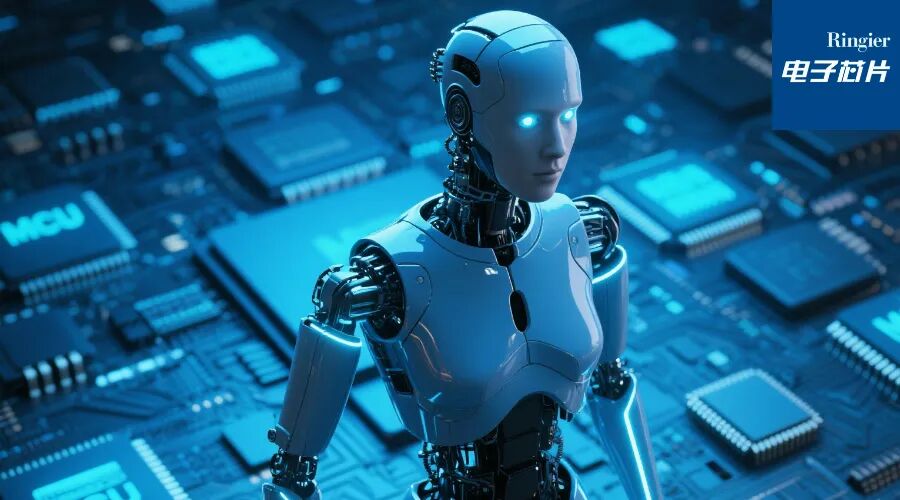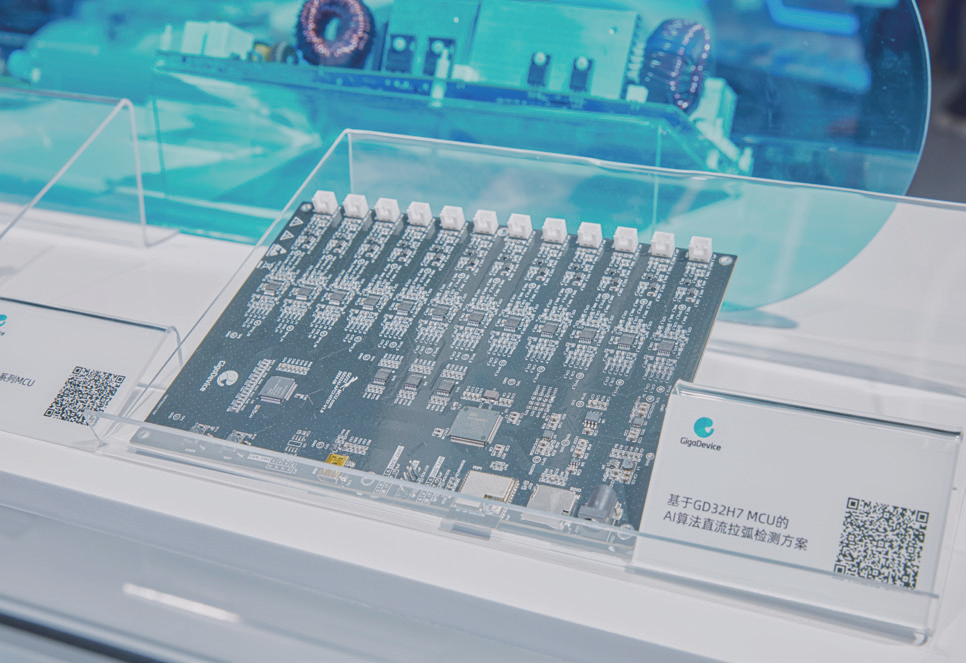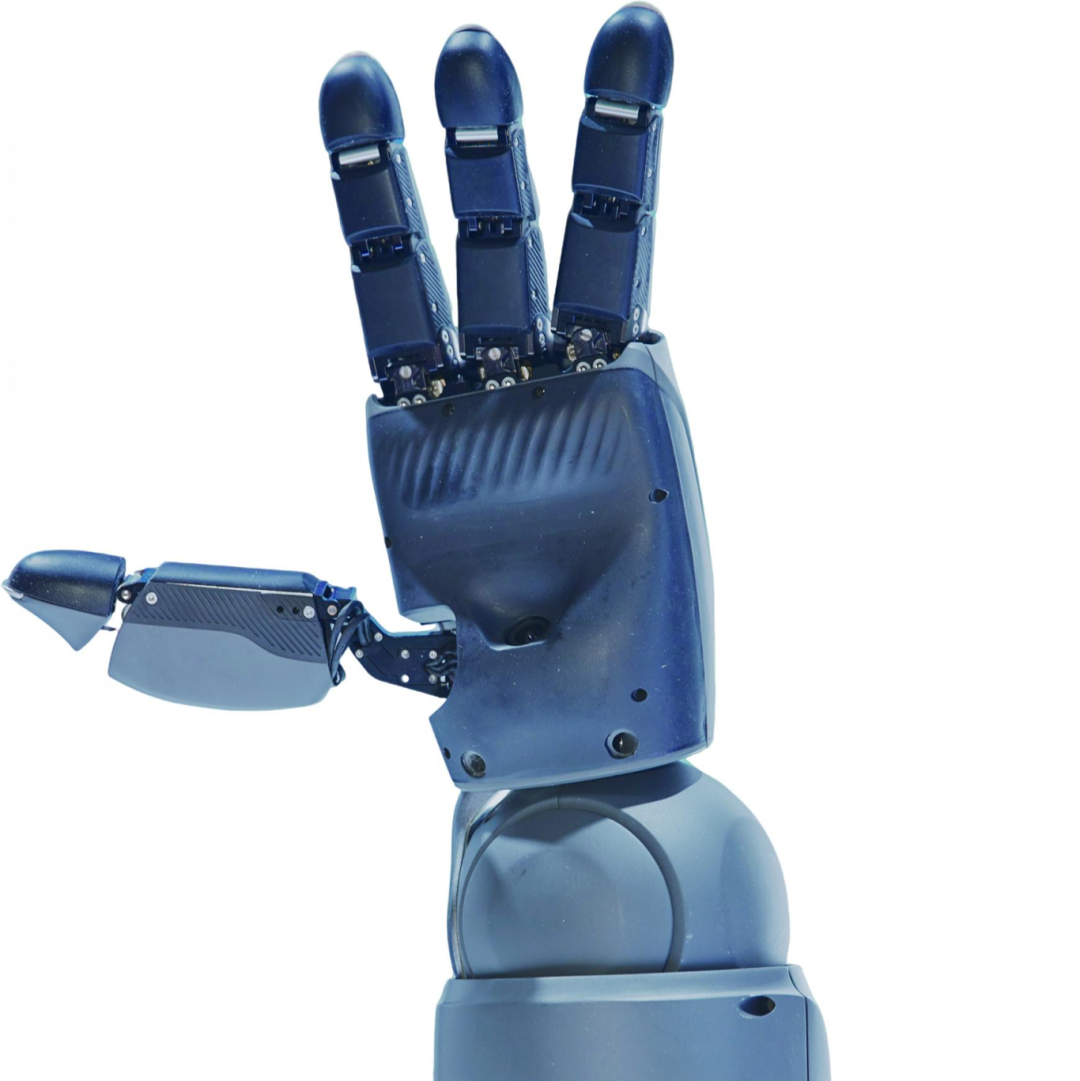
Image Source / Doubao
The differentiated demand for MCU chips by humanoid robots may unlock a trillion-dollar market.
Source /Ringier Industrial Media “Smart Manufacturing”
Embodied intelligence is profoundly transforming the operational model of industrial production. It endows machines with the ability to perceive their environment, make autonomous decisions, and physically interact, significantly enhancing the flexibility and efficiency of production lines.
At the 2025 Munich Shanghai Electronics Show, semiconductor supplier GigaDevice showcased over 90 products and solutions, covering a full range of product lines including memory, microcontrollers, sensors, and analog chips, deeply covering key areas such as digital energy, industrial, automotive, consumer electronics, and the Internet of Things, demonstrating GigaDevice’s technological accumulation and extensive layout in diverse applications.
In an interview with Chen Siwei, Product Marketing Director of GigaDevice’s Microprocessor Division, he shared some observations on the currently hot humanoid robot field and GigaDevice’s related technological layout.
Part 1
Embodied intelligence solutions unleash new manufacturing momentum
In GigaDevice’s industrial exhibition area, there are multiple solutions based on the GD32H7 series MCU, including servo slave applications, AI voice recognition, and GUI graphical display solutions, fully meeting the needs of industrial automation and intelligence. It is understood that the GD32H7 series MCU has a main frequency of 600MHz, suitable for scenarios such as industrial automation, servo drives, and robot control.
At the exhibition, the Pasini multi-dimensional tactile dexterous hand based on the GD32H7 series MCU was very eye-catching: the multi-dimensional tactile dexterous hand DexH13 uses the high-performance MCU from the GD32H7 series and is equipped with 1140 self-developed ITPU tactile sensing units, making it a dual-modal dexterous hand that integrates multi-dimensional touch and AI vision.

DexH13 innovatively adopts a bionic mechanical structure design with 4 fingers and 16 degrees of freedom (13 active + 3 passive), possessing 15 human-like rich perception dimensions, equipped with an 8-megapixel high-definition hand-eye camera, combined with compliant and flexible motion control capabilities and a precise stable force control of 0.01 N, capable of accurately capturing multi-dimensional information such as material, texture, and pressure, and accurately reproducing complex action modalities such as grasping, pinching, pressing, and finger opening and closing, with millimeter-level precision operation and human-like real-time action feedback, perfectly suited for various scenarios such as automotive manufacturing, precision assembly, medical rehabilitation, security checks, home services, and logistics warehousing.
According to Chen Siwei, humanoid robots mainly consist of three core technology modules: perception module, motion control module, and human-machine interaction module. Core functions such as motion control, real-time communication, and sensing all require the use of MCUs. Taking the robot joints and dexterous hands as examples, the core is the servo control system, which is a strong demand area for MCUs and also a focus for GigaDevice.“Overall, the future market growth potential for humanoid robots is enormous and is expected to explode.” he stated.
Based on market judgment, GigaDevice currently has three clear routes for humanoid robot-related solutions:
-
The first type is traditional BLDC, FoC, and servo motor solutions for controlling various joints of robots;
-
The second type is industrial communication solutions, such as EtherCAT, CoE, FSoE, etc.;
-
The third type is edge AI solutions based on GD M7 and M33 MCUs, which perform various rapid inference tasks at the edge by collecting various physical quantities;
-
In the future, the dexterous hand of humanoid robots will become a separate intelligent subsystem, equipped with its own domain controller, and even support edge AI. GigaDevice has related arc detection solutions, predictive maintenance solutions, etc., to assist the development of AI technology.
“Our global market share in general MCUs is still very small, and there are more opportunities waiting to be explored. Therefore, we are not likely to achieve business growth by merely chasing hot topics; we have a clear strategic plan and implementation path, focusing on doing well in products and solutions. Currently, there is still a large market demand in fields such as home appliances, energy, and automation that has not been met, and we will focus on refining our products and solutions, while also keeping an eye on emerging applications in the market to seize opportunities from changes in market and customer demand,” Chen Siwei shared, “In the future, GigaDevice will also collaborate with third-party partners to launch more practical solutions.”
Part 2
Humanoid robots have differentiated demands for MCU chips
Regarding the new demands for MCU chips brought about by the development of humanoid robots, Chen Siwei shared four major trends:
First is small size and high integration.Currently, there are numerous MCUs in humanoid robot components represented by dexterous hands. To avoid giving a sense of oppression due to oversized hands and to enhance the human-machine interaction experience, future MCUs must inevitably develop towards smaller sizes and need to possess high integration characteristics.
Small size packaging not only meets the spatial requirements of robot design but also better adapts to the integration requirements of compact components. This trend will drive continuous innovation and breakthroughs in MCU packaging technology and integration.
Secondly, low power consumption.Currently, many high-performance MCUs generate a lot of heat during operation, which affects the human-machine interaction experience. Therefore, low power consumption has become an important development trend for future MCUs. By reducing power consumption, heat generation can be effectively minimized, improving the stability and reliability of robot operation, and providing users with a better human-machine interaction experience.
Additionally, compliance with safety standards is required.As humanoid robots increasingly interact with humans, the formulation and implementation of relevant safety regulations have become inevitable. These safety regulations will raise the usage standards for MCUs, requiring them to support functional safety and information security applications.
Functional safety ensures that robots do not harm personnel during operation, while information security protects user data and privacy. MCUs must continuously upgrade their technology to meet increasingly stringent functional safety and information security standards, ensuring the safe and reliable operation of humanoid robots.
Finally, specialization.To expand the market scale of humanoid robots, reducing costs has become key. Currently, a dexterous hand requires a large number of MCUs. Specialized MCUs can more effectively reduce the overall BOM cost of the system, thereby promoting the expansion of the humanoid robot market scale.

“We see many traditional industrial automation customers working on dexterous hands because their technology is derived from the same source, with the core being servo systems, motors, encoders, etc., for precise real-time motion control. Humanoid robots have high requirements for size, and the wiring cannot be too complex, and the communication protocols used are also relatively simple and flexible, such as EtherCAT and CAN. GigaDevice’s advantage lies in having a full range of MCU products with different computing power, packaging, specifications, and communication interfaces, and in the future, we can also customize based on customer needs and provide some integrated solutions,” Chen Siwei shared.
Relying on continuous technological breakthroughs, precise market insights, and a rich product matrix, GigaDevice will continuously provide innovative solutions to customers, driving the intelligent upgrade of the industry.
*Disclaimer: This article is the original work of the author. The content of the article reflects their personal views, and our reposting is only for sharing and discussion, not representing our endorsement or agreement. If there are any objections, please contact us.
For reprints or submissions, please contact | [email protected]
For more information related to electronic chips, please follow
Click “Read the original text” to enjoy a free subscription to the “Ringier Electronic Chip” special electronic newsletter.
 Like
Like  Recommend
Recommend
Share Now